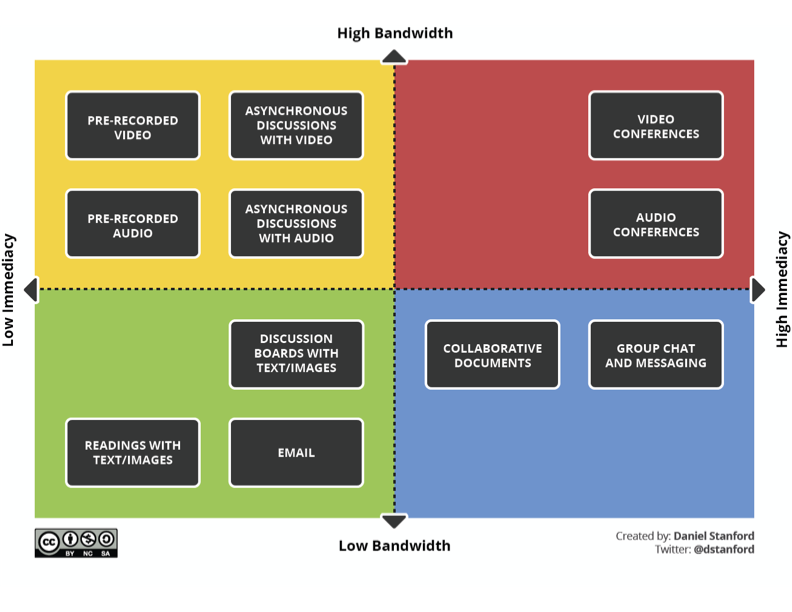“Low Tech” Methods of Online Instruction
Why Should Instructors Consider “Low Tech” Methods of Instruction?
Strategies for Reaching Students
- A quick and easy way to find out your students’ access to technology is to ask.
- Start with a short survey to assess what they have. Keep the survey short.
- Ask: What is their technology access status? (computer, smart phone, flip phone, TV, Netflix, etc.?)
- What extenuating circumstances do you need to know about?
- Consider creating a contact list of emails for your class (don’t worry about HB1 – it was changed for educational purposes):.
- For paper/essay assignments consider emailing them to students and then accepting them via email.
- Make sure you download any articles you want students to read and have them ready to attach to an email in case students lack the internet to get into the LMS but CAN get into email.
- Swap out required viewing that may have been shown in class or be required to be checked at the library for things that can be watched via streaming service. To find a best replacement, search what you were going to assign to be watched and then “streaming online” to first see if it is available for streaming. If not, googling the title with the word “alternatives” usually leads to threads where faculty share other tried-and-true options.
- If you are using Canvas for instruction, you can allow students to download course content by activating ePub in settings.
Consider the Following
Now is the time to really think in a UDL mindset. If that is new to you, watch this short video (if you have time):
If not it is basically this: We ALL learn differently, and have different needs, which are more complex than traditional labels. Ergo – to provide the best chance at differentiation and learning success gives students options. “Multiple means” is the key here. Give students objectives and what you want them to demonstrate and have them propose the project/final submission
Resources
- This infographic is a great resource, and summarizes the activities which can be utilized for high and low bandwidth

- The article Video conferencing Alternatives: How Low-Bandwidth Teaching Will Save Us All by Daniel Stanford offers great insights into orientating your instruction for online learning
- You may want to include Student Computer and Internet Access Support page in your class as it informs students the support they have access to through VCU